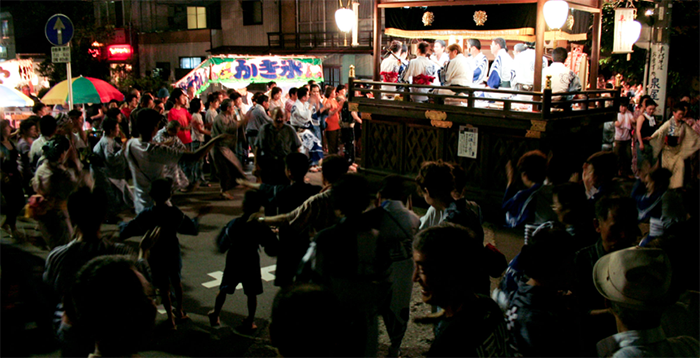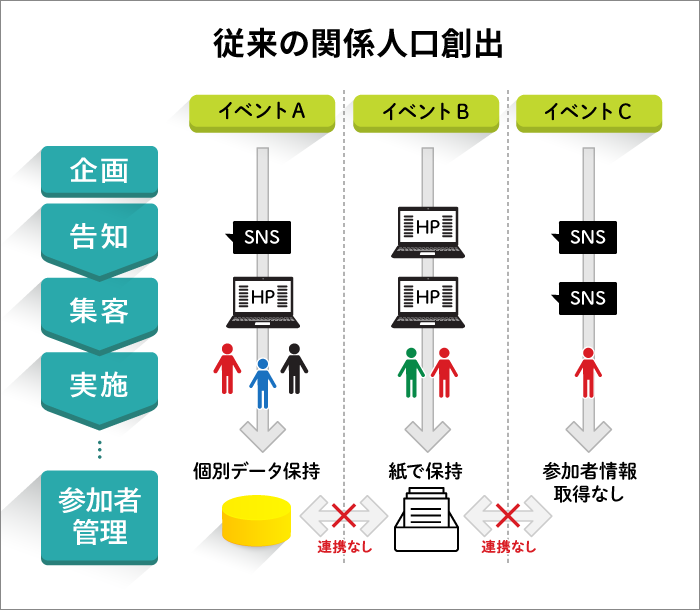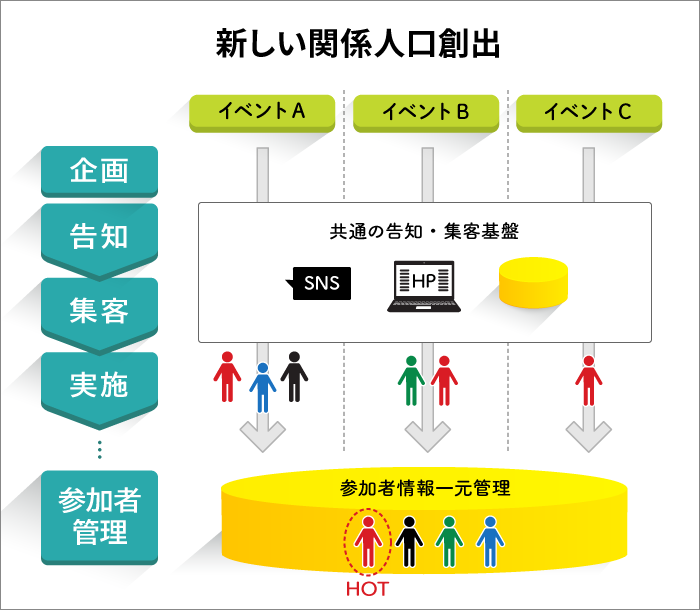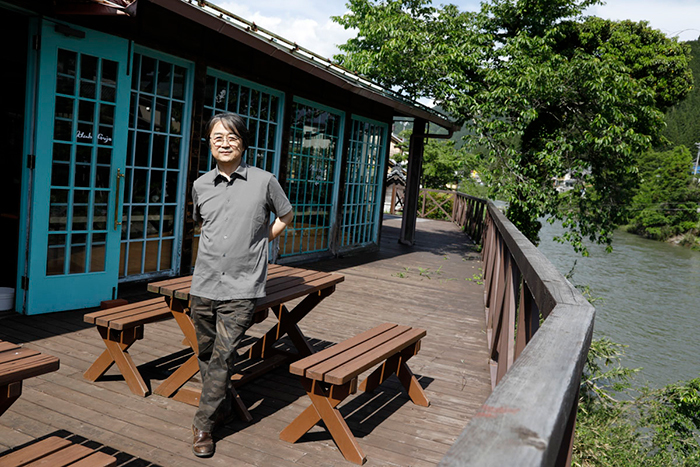Civic tech refers to residents themselves solving local challenges using technology. However, it is not solely defined by "professional engineers living there developing new systems or tools for the community."
This series focuses on introducing examples of what we might call "broad civic tech" – initiatives that revitalize communities by having residents utilize existing IT/ICT services like social media and smartphone apps.
This time, Takuya Kagata of Dentsu Digital Inc., who has handled numerous regional initiatives, introduces an effort to increase the "related population" through IT utilization in Gujo City, Gifu Prefecture.
Gujo City's Challenge: Failing to Convert "Visitor Population" into "Relationship Population"
Located almost at the center of Gifu Prefecture, Gujo City is a region with a very high volume of tourists. It is famous for the "Gujo Odori," one of Japan's three major folk dances, and the townscape of "Gujo Hachiman," which retains the atmosphere of an Edo-period castle town. Furthermore, nature-based activities like rafting are popular, and crafts such as geta (wooden clogs) and dyeing, rooted in the dance culture, are also thriving.

Many people visit from outside the city and even outside the prefecture for the Gujo Odori, one of Japan's three great folk dances.
Gujo City has a total population of just under 40,000, yet it attracts nearly 6 million tourists annually. This figure alone illustrates how many people are drawn to this town.
Gujo City is also active in venture businesses and boasts many charismatic figures with fans nationwide, such as legendary singers of the Gujo Odori famous for its "all-night dancing," masters of nighttime river diving fishing, and experts in natural farming.
Furthermore, the city has deep connections with cultural figures. Manga artist Momoko Sakura frequently visited during her lifetime, and her affection for Gujo led her to independently create the character "GJ8 Man." As a region, it possesses incredibly rich tourism resources.
However, Gujo City faced a challenge. While it attracted many "exchange populations" like tourists, these visits often remained one-time events. The city struggled to develop them into "relationship populations" (※) who would engage with the region long-term.
※ Relationship Population: Refers to cases where people from outside the region maintain ongoing, sustainable connections with the area—neither permanent residents ("settled population") nor temporary visitors ("exchange population"). This approach aims to increase touchpoints between the region and outsiders, fostering potential contributors to community development.
Furthermore, Gujo City itself, formed by the merger of seven towns and villages in 2004, has seen its population decline year after year. Increasing the relationship population, beyond just temporary tourism, became an urgent priority.
This led to the implementation of the "Gujo Connection Project," which Dentsu Inc. had the privilege of assisting with.
Building Connections Among Gujo Fans Through Data Management and Community
The project originated from a consultation with Haruki Okano, who was part of Dentsu Inc.'s "Regional Revitalization Office." Okano had been seconded to Gujo City through the Ministry of Internal Affairs and Communications' "Regional Revitalization Corporate Personnel" program.
He approached us with the goal of "increasing Gujo City's connected population." Through our discussions, this project was born.
Our goal was to "connect horizontally" people who participated in events in Gujo City, such as festivals and activities. While many "Gujo fans" had visited for various purposes, events themselves lacked coordination and remained completely siloed.
However, if we could encourage people visiting Gujo for rafting, for example, to also participate in events related to nature experiences or other activities highly correlated with rafting, we could foster deeper, longer-term engagement with the region.
Similarly, if we can guide tourists who come for the Gujo Odori dance to related crafts or other events, their visits—which were previously just once a year—might increase to two or three times.

Gujo City also boasts many attractive crafts.
To create these cross-event connections, we utilized Salesforce, a leading CRM (Customer Relationship Management) system. Primarily used by companies for customer management and sales support, we implemented it for the "region" of Gujo City.
We consolidated customer data, which had previously been managed separately by individual shops and organizations, into a unified database for "Gujo City" within Salesforce. Based on this accumulated data, we began sending direct mail (DM) to individuals, promoting events they might be interested in or announcing events they had visited the previous year.
However, not everyone sees direct mail. Therefore, as another customer touchpoint, a Gujo City group was created on Facebook. This community was established for visitors to Gujo City. Within this community, various events taking place in Gujo City are shared. Gujo fans, who previously only knew about events they were personally interested in, began discovering new events, thinking, "Oh, there are other events like this too!"

Previously, each event handled its own information dissemination, participant recruitment, and management. However, this approach made it difficult to identify who was building deeper relationships, and other events lacked ways to further engage these individuals.

Therefore, we built a shared system using existing IT services for information dissemination, recruitment, and participant management that all events could use. This allowed us to identify people likely to become connected to Gujo City as a whole and create a state where we could maintain ongoing contact with them.
The operation of this "Gujo Connection Project" was entrusted to HUB GUJO, an organization running a local coworking space. It was deliberately structured as a private-sector initiative, not a government policy.
Key points included Salesforce DMs, topic posts in Facebook communities, and comment exchanges with participants. While HUB GUJO managed operations, the role of "Connection Supporters" – creating DMs and communicating with Gujo fans on Facebook – was entrusted to local housewives.
Whenever a Gujo fan commented within the community, the supporters proactively replied, energizing the conversation. Gradually, more Gujo fans who didn't know each other started connecting, creating a flow where previously isolated Gujo fans and events began linking horizontally.
As these horizontal connections grew, the frequency of visits to Gujo and opportunities for engagement increased. This directly contributes to the "related population."
Rather than developing a dedicated system from scratch to solve local issues, this project utilized "proven technologies" like Salesforce and Facebook, involving "citizens" – private organizations and local housewives. I believe this is a practical example of "broadly defined civic tech."
Finally, let's hear comments from Okano, who was seconded from Dentsu Inc. to Gujo City and worked tirelessly there, and from the representative of HUB GUJO, which actually runs the project.
Coordinating "Four Phases" to Generate Related Population

Mr. Haruki Okano, Regional Revitalization Office, Dentsu Inc.
I'm Haruki Okano from Dentsu Inc. Regional Revitalization Office. Since my assignment to Gujo City, I've planned and created opportunities for diverse people to engage with this area. This includes launching the local incubation initiative "Gujo Company," where residents and outsiders collaborate to create projects with deep roots. The "Gujo Connection Project" is one such initiative.
I believe there are four phases to increasing a region's connected population:
- Exchange Phase (Visiting the region through tourism, etc.)
- Relationship Continuation Phase (Maintaining connections via DMs, Facebook, etc.)
- Project Phase (Becoming involved in local initiatives)
- Stewardship Phase (Becoming actively involved in the region)
Gujo often saw people stop at the Exchange Phase (1) through tourism. However, by maintaining communication with Gujo fans via DMs and Facebook without interruption, we can transition them to the Relationship Continuation Phase (2). As the relationship deepens here, people move into the Project Phase (3), where they engage with local initiatives, and then into the Stakeholder Phase (4), where they maintain ongoing involvement throughout the year. Creating this smooth flow is key to generating a relationship population.
The crucial element is creating a system that links these four phases. Through the En-tsunagi Project, we believe we achieved this by combining public and private sector efforts and leveraging IT.
Introducing video conferencing to elementary and junior high schools. The benefits of accessible IT integration.

Mr. Yoshinari Akatsuka, Chairman, NPO HUB GUJO
I'm Akatsuka from HUB GUJO. While HUB GUJO manages the Gujo Connection Project, two housewives living in Gujo served as "Connection Supporters," handling direct mail creation and Facebook communications. Many young women move to Gujo after marriage, and they are comfortable with SNS and IT. We structured this role so they could utilize their skills while raising children at home.
Gujo has always had many innovators, and each community was vibrant, but it was difficult for these communities to connect horizontally with each other. We operate the HUB GUJO coworking space because we wanted to create a place where diverse people could connect with Gujo. To achieve this, we enhanced IT systems like video conferencing, making it a space where people within the city and from afar could connect.
Incidentally, Gujo City has also introduced teleconferencing systems in its public elementary and junior high schools. Beyond the declining birthrate, schools are spread out across the mountainous region, leading to isolation among children. Teleconferencing has enabled exchanges and joint classes, helping children make new friends in new ways. I strongly believe leveraging IT is essential for sustaining our region.

HUB GUJO was designed as a space to serve as a hub connecting communities within Gujo, as well as between Gujo and people from outside.










